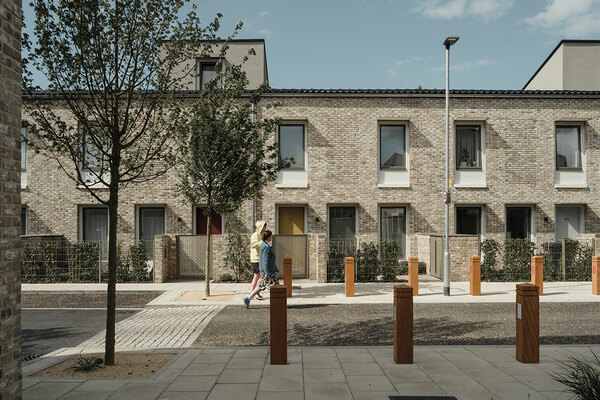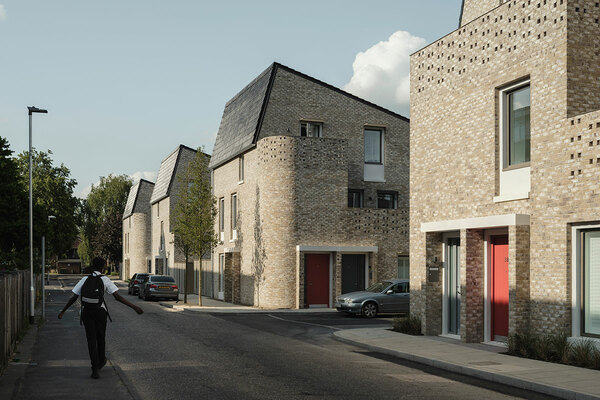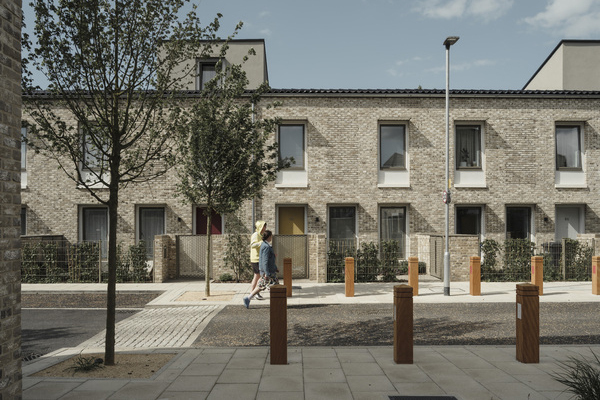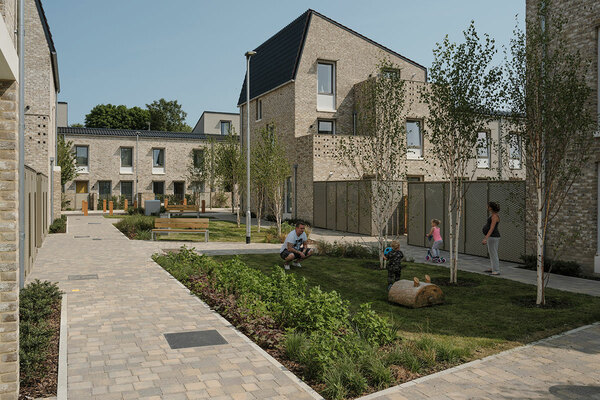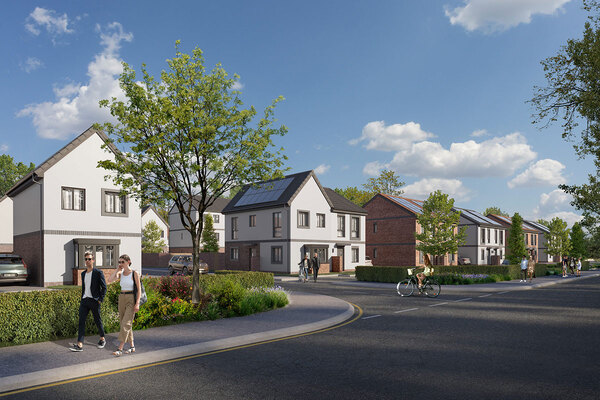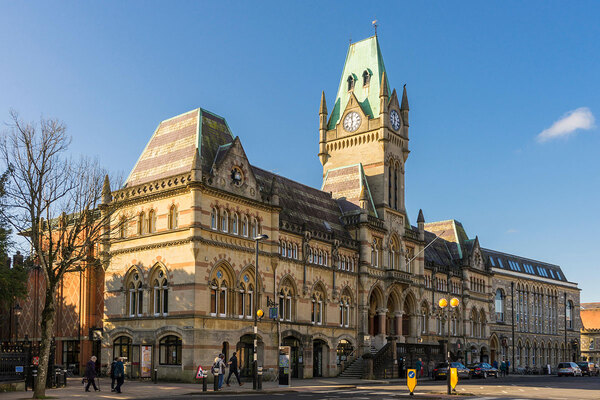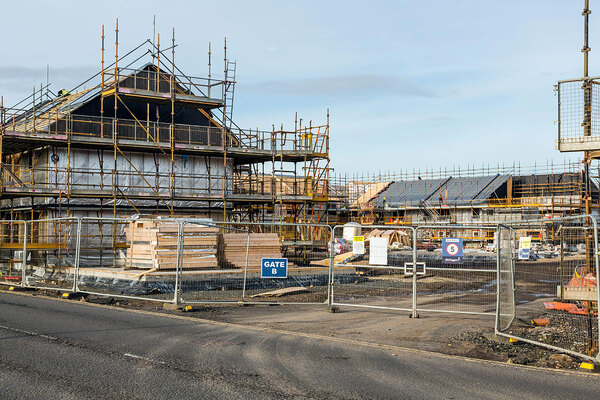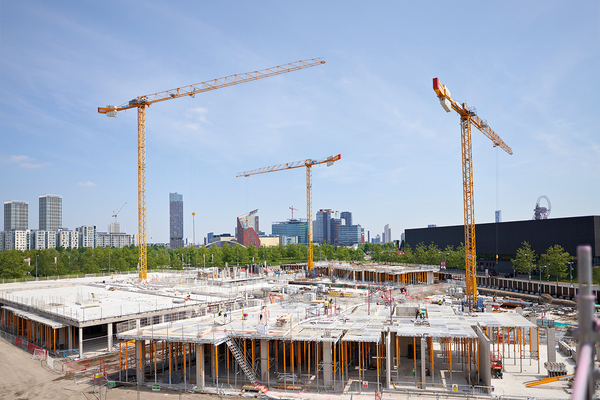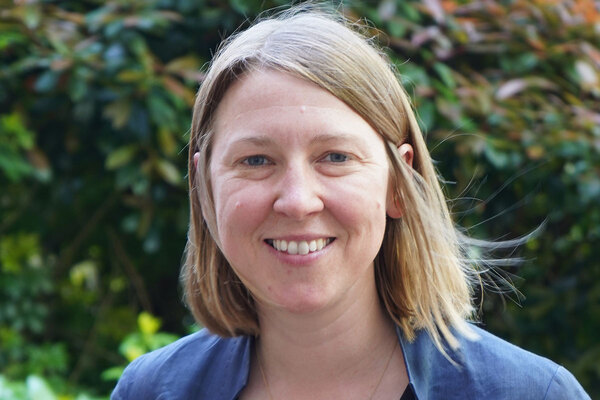What we can learn from Goldsmith Street’s Stirling success
Change is never easy. But with an eco-friendly social housing development winning architecture’s top prize, this should serve as an inspiration and challenge, says Anne McGurk
With Brexit debates and the climate crisis providing the gloomy background to life in the UK at the moment, what joy it should be for all of us in the social housing sector to have Goldsmith Street win the Stirling Prize.
It certainly gave me pleasure and made me ‘join the dots’ to formulate some ‘sustainability’ questions and challenges – not just for Phoenix Community Housing, but for the sector as a whole.
I haven’t felt able to influence the Brexit process of late, but I have added my voice and my presence to the call for action on the climate crisis. I am sorry if I was part of your problem in getting to work in London. I didn’t glue myself anywhere. But I did sit very solidly next to a lion in Trafalgar Square after being moved from Lambeth Bridge.
My personal views on government policy and the climate crisis and appropriate action are not shared by all at Phoenix. That is a good thing. We grow and learn by challenging each other in a respectful way. However I feel certain in saying we at Phoenix agree that everyone should have the right to a home that is appropriate to their needs.
I also feel certain we agree that the decades of totally dysfunctional housing provision are not accidental. They are the result of various government policy decisions and practices.
Can anyone remember when housing policy met the needs of the population, and when market forces met the needs of all? Yes, there are those who have benefited from the past few decades of housing policies, those whose profits depend on the system being dysfunctional – but there doesn’t seem to have been a time when housing policy was designed for the benefit of all.
Isn’t it time that those of us in the social housing sector join together in meeting the housing needs of today and tomorrow? If we don’t, we will add to the local and global problem at all levels.
That Goldsmith Street’s Stirling Prize is the first to be awarded to a social housing project shouldn’t surprise us. The Stirling Prize has only existed since the late 1990s and social housing new build was almost non-existent at this time.
But let’s not dwell on the past too much. Let’s learn from this achievement of Norwich Council and architect Mikhail Riches.
Buildings consume almost 40% of energy locally and globally, and produce about 30% of greenhouse gases. ‘Green’ thinking designs such as Goldsmith Street are beginning to make an impact. They are reducing energy consumption by up to 80% – some are targeting ‘net zero’ – and in most cases these buildings are constructed at no extra cost.
What are we all doing to reduce the energy consumption of our stock, our tenants’ homes? What are we all doing to make them more water/energy efficient? What are we all doing to keep rents low?
The Passivhaus Standard, as found in the Goldsmith Street properties, can give tenants an estimated 70% or more saving on their fuel bills. The idea of community and fostering inclusion are also design factors – each home has an outside area as well as a shared communal space for people to get together.
“We need to find new ways of living and working together that reduces the degree of damage we inflict on our environment and reverses the damage already done”
The development encourages interaction and knowledge of neighbours. It is a housing complex built with community in mind and the need to save the planet.
We need to find new ways of living and working together that reduces the degree of damage we inflict on our environment and reverses the damage already done.
Change is never easy, I think we all know that. I am sure we have all tried to change at some point – stop smoking or drinking, take more exercise, give up meat etc. It is hard at a personal level.
As organisations we can bring about change if we work together and support each other in presenting the case. This means making the argument, developing strategies, setting the boundaries and providing incentives that move us towards a genuinely sustainable way of living. And a sustainable way of building homes and communities.
It’s not an easy task, but I’ll finish with my favourite aphorism from Rabbi Tarfon: “You are not required to complete the work, but neither are you free to desist from it.”
Anne McGurk, chair, Phoenix Community Housing

